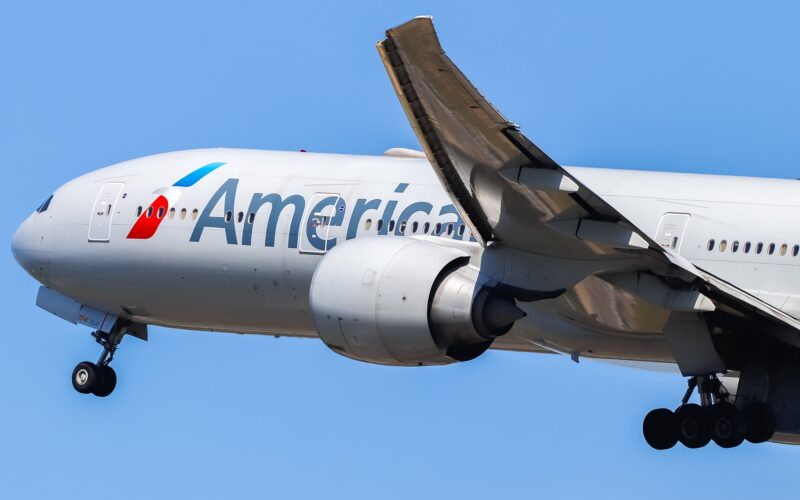The United States (US) Federal Aviation Administration (FAA) has granted permission to American Airlines to overfly the Kabul Flight Information Region (FIR) in Afghanistan at flight level (FL) 300.
On September 18, 2023, American Airlines’ Director of Dispatch Operations Tim Antolovic had asked the regulator to allow the airline’s aircraft to overfly Kabul FIR while using jet routes P500-G500 at FL300. The carrier singled out the route between New York John F. Kennedy International Airport (JFK) and Delhi Indira Gandhi International Airport (DEL) for the exemption request.
The basis for the exemption came following the FAA’s ruling, which prohibited US airlines from overflying the Kabul FIR at levels below FL320 “to address hazards to persons and aircraft engaged in such flight operations due to the risk posed by violent extremist and militant activity and the lack of adequate risk mitigation capabilities to counter such activity”.
According to the letter by Antolovic, operating flights at FL300 or above is within the limitations of a Notice to Air Mission (NOTAM) for Afghanistan’s P500 jet route, with the airline’s Geopolitical Risk Team in Corporate Security being in constant contact with the FAA to assess NOTAM and Special Federal Aviation Regulation (SFAR)-related risks.
The exemption would apply to 20 Boeing 777-300ER aircraft that could potentially fly between JFK and DEL, the FAA noted.
Meanwhile, the FAA explained that, after the Taliban took over Afghanistan, the International Civil Aviation Organization (ICAO) Asia-Pacific Office contacted the Afghanistan Civil Aviation Authority (ACAA). Together with neighboring countries’ Air Navigation System Providers (ASNP) and the International Air Transport Association (IATA), it then established a contingency coordination team (CCT). The CCT’s goal was to “establish a contingency plan for the safe resumption of civil overflights in the Kabul FIR”.
“Afghanistan subsequently issued a series of NOTAMs delineating overflight procedures and established altitude blocks for specific categories of flight operations across various regions,” the FAA continued. “Afghanistan NOTAM G0306/23 permits overflight operations between waypoints FIRUZ and MOTMO on P500 at altitudes between FL300- FL510.”
According to the regulator, the airline’s requested flights at FL300 “can be conducted without an adverse effect on safety, subject to compliance with the conditions and limitations set forth in this exemption, as the flight distance and time between waypoints FIRUZ and MOTMO is approximately 12 nautical miles and takes approximately 95 seconds at cruising speeds”.
As such, the limited time that aircraft spend overflying between the two waypoints “minimizes potential opportunistic threats should a violent extremist observe or hear an overflying aircraft”. However, while the FAA warned that “violent extremists and militants have access to weapons posing risks up to 25,000 feet and there is high terrain in the vicinity of jet routes P500-G500”, no such weapons were used on commercial and/or military aircraft when active US military personnel were present in the country, or since the US and its allies left the country in August 2021.
The FAA also pointed out that American Airlines has two types of Boeing 777 in its fleet, namely the -200ER and -300ER. While the -200ER cannot fly the P500-G500 jet route, as it does not meet the minimal passenger oxygen requirement, the -300ER does. At the same time, though, the –300ER cannot climb to FL320 between DEL and the Kabul FIR in certain meteorological conditions.
Nevertheless, the regulator determined that granting the exemption “would not cause an adverse effect on safety, subject to compliance with the conditions and limitations in this exemption”. Furthermore, prohibiting American Airlines from flying the route would result in the US public having less “access to the route described in the petition, which provides a direct flight between New York City and New Delhi”.
“According to the Department of State, India is a vital strategic partner of the United States in efforts to safeguard the Indo-Pacific as a region of peace, stability, and growing prosperity, and the strong people-to-people ties between the two countries, reflected in the four million-strong Indian American diaspora and vibrant educational exchange between the two countries, are a tremendous source of strength for the strategic partnership,” the FAA concluded.
The exemption ends on July 25, 2025.

